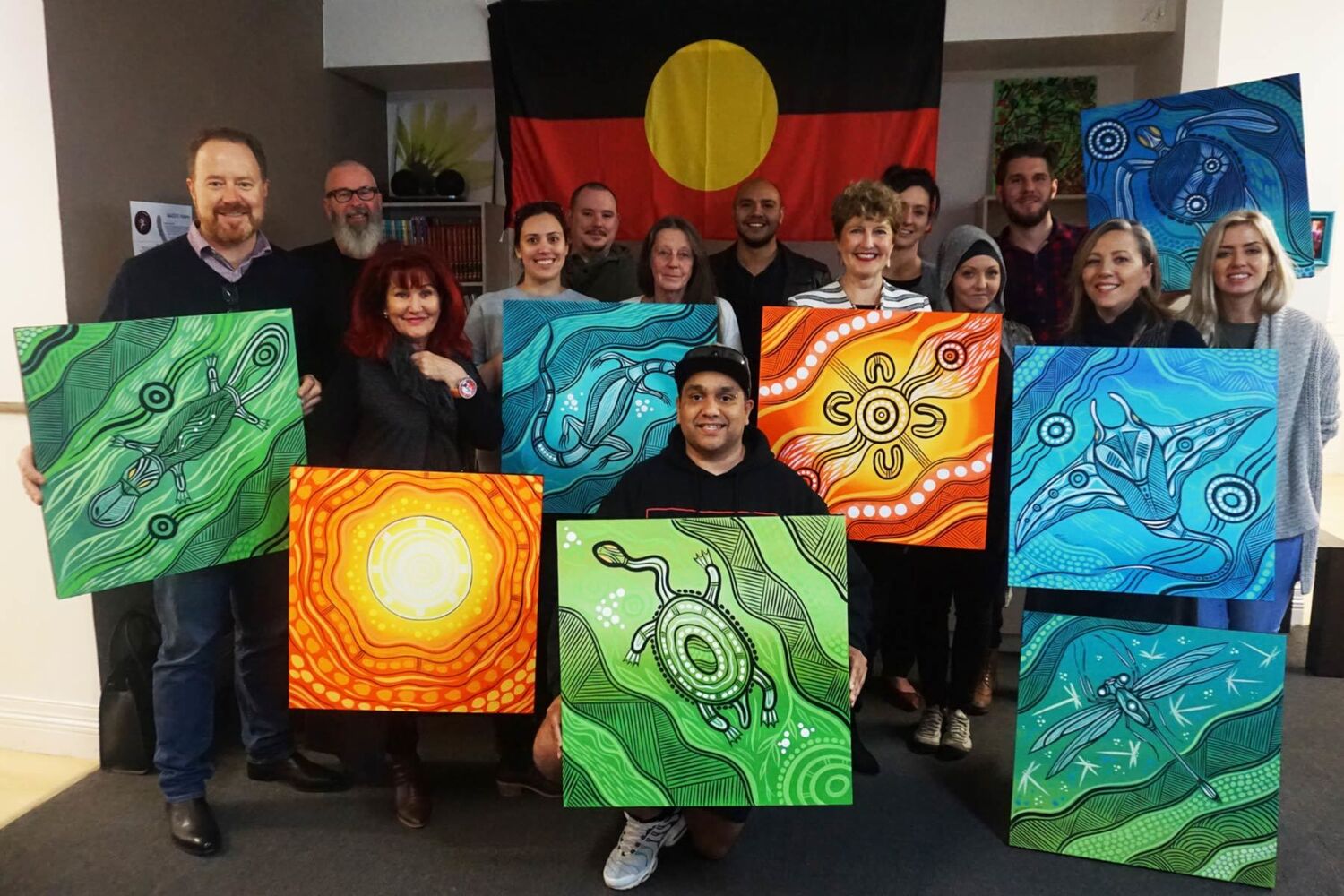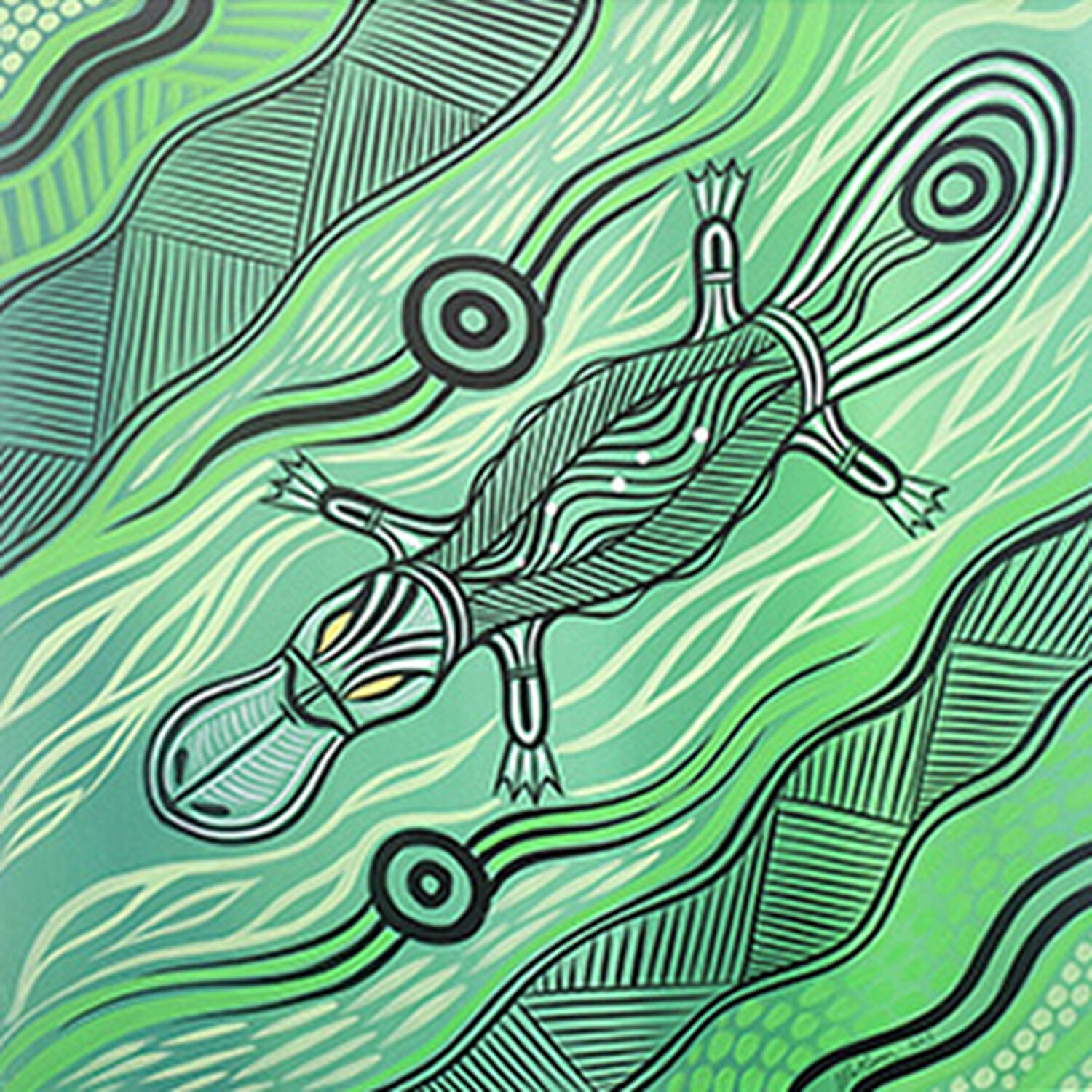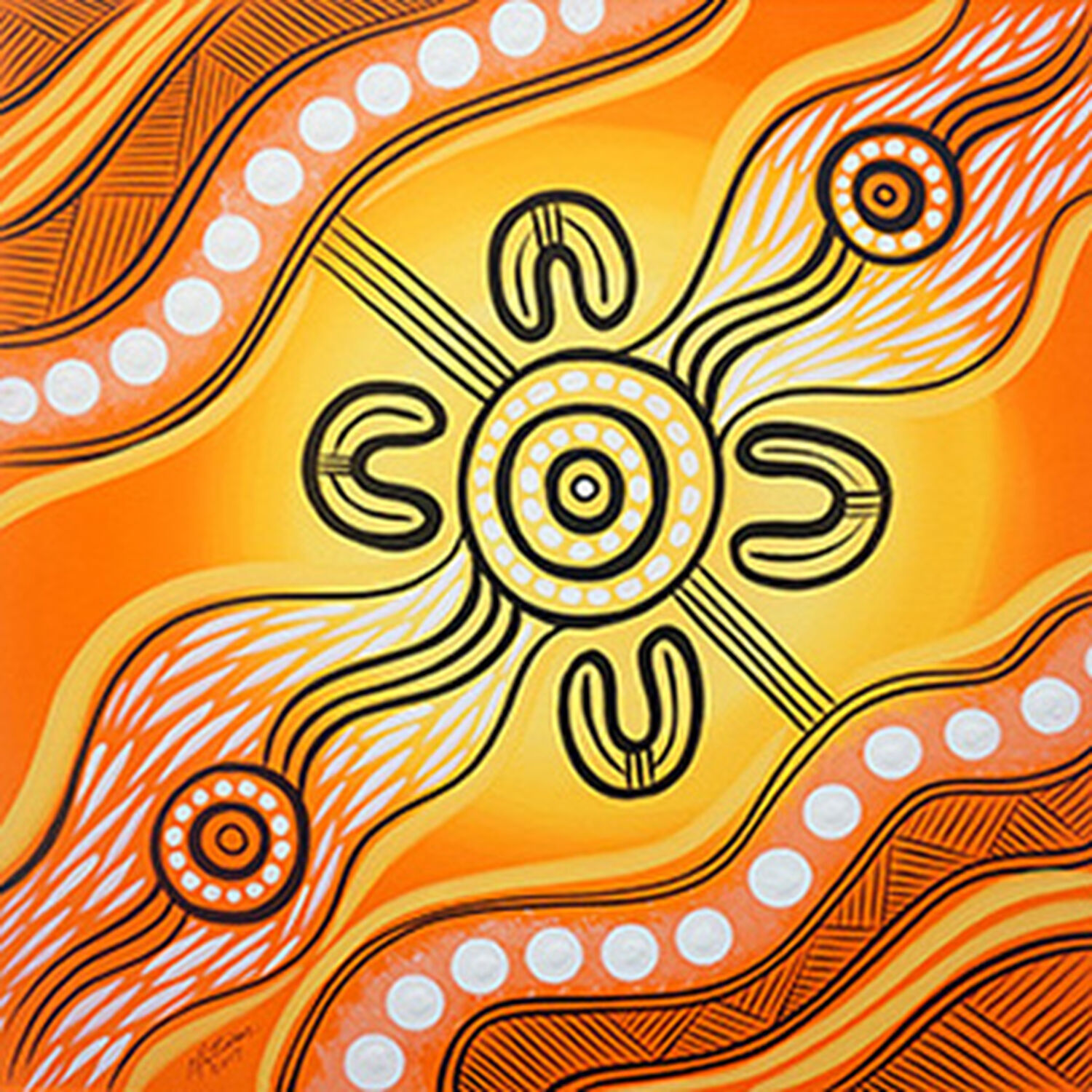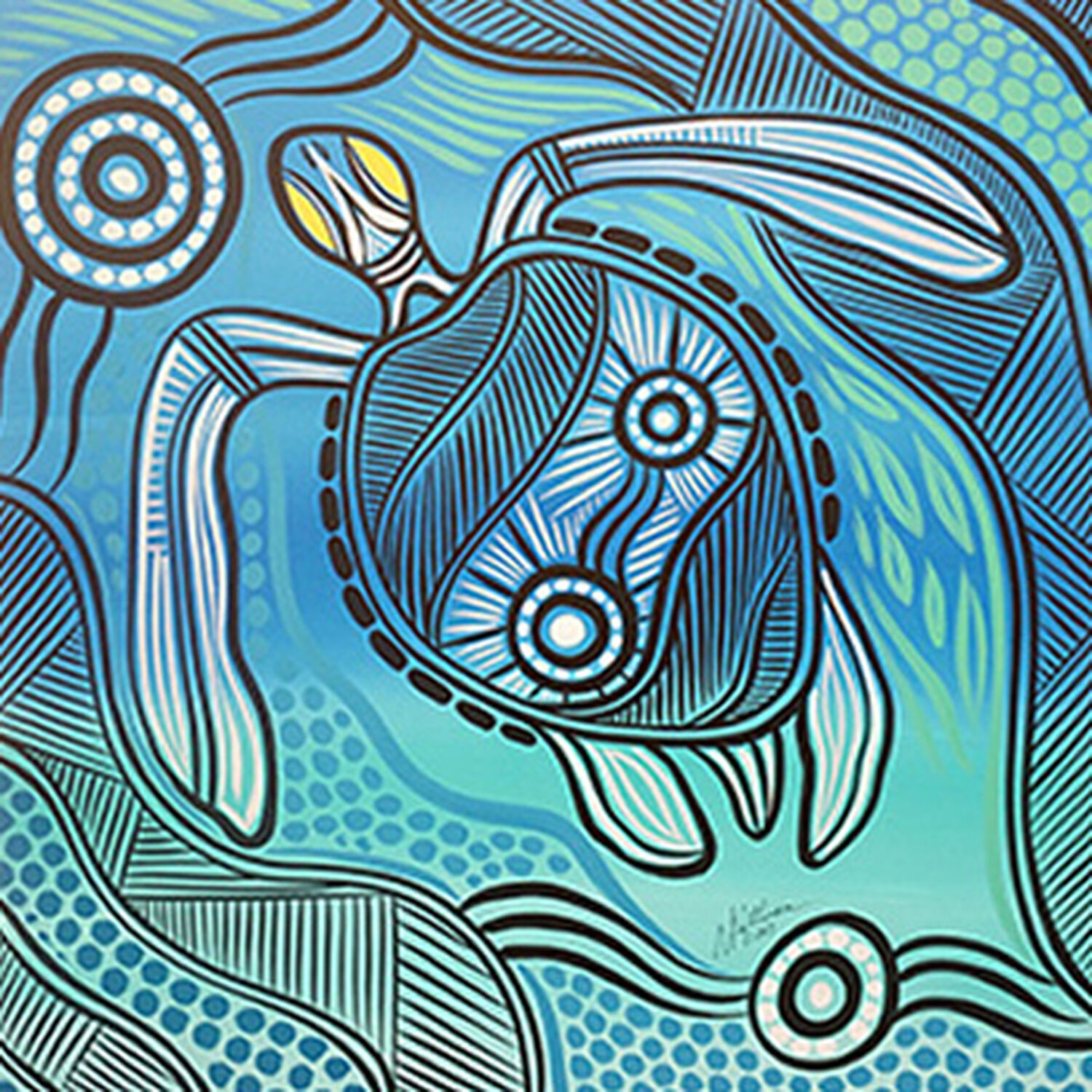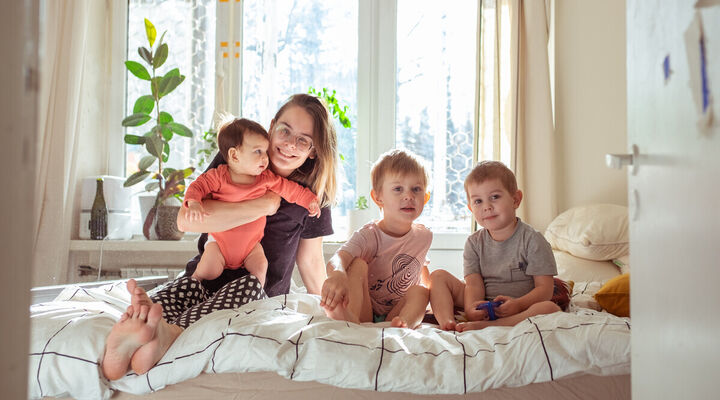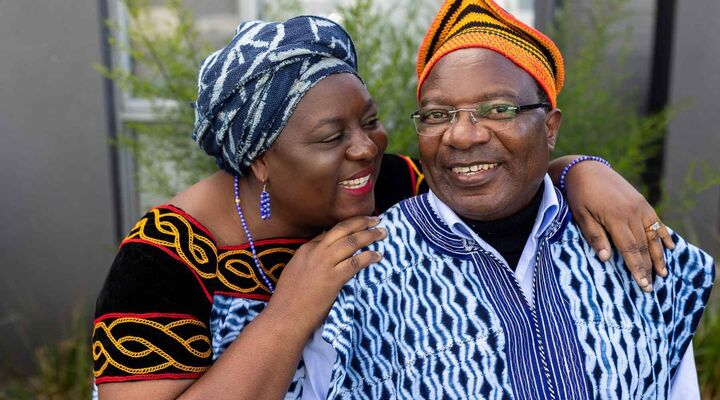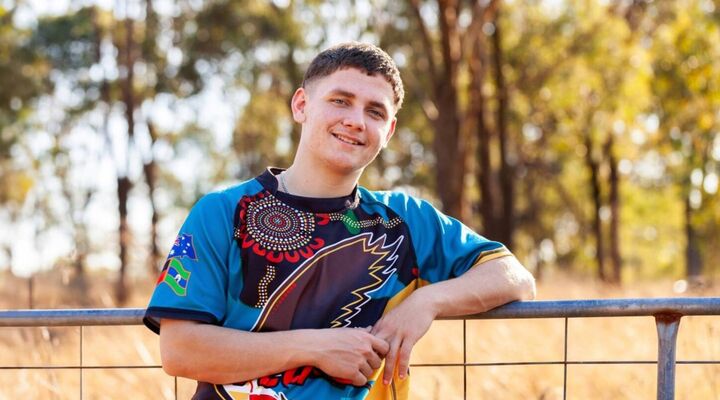Art is a potent way of imparting stories and is particularly significant in Aboriginal culture.
When MacKillop’s Out of Home Care Western Metro division was brainstorming how to make residential homes more welcoming for young Aboriginal people, visual art seemed like a natural choice. But the team knew it had to be genuine to have real meaning for young people.
Leesa Scanlan, Residential Coordinator in the district came across Aboriginal artist Nathan Patterson on Facebook and sensed immediately that his art would be a good fit for the young people at MacKillop. Nathan’s style is unusual amongst Aboriginal artists for his strong use of bright colours.
“I knew that Nathan’s brightness and vibrancy was something we really wanted and something that would really work in our homes,” Leesa said.
Nathan also holds a strong understanding of how art can make Aboriginal people feel welcome, especially in transitional homes.
“It was something close to my heart. I’ve done a lot of work with young people and in residential units. I think it’s really important Aboriginal people feel at home in these places.
“People might think that it’s just a painting or a poster, but as an Aboriginal person it really does make me feel welcome when I come to place that has Aboriginal art,” Nathan said.
As part of NAIDOC (National Aborigines and Islanders Day Observance Committee) Week, Nathan presented the finished artworks at one of the residential homes. The eight paintings will be hung in each of MacKillop’s residential homes in Melbourne’s Western Metro district.
Gerard Cameron, Area Manager for Out of Home Care Western Metro talked about how the artworks demonstrate our commitment to supporting young Aboriginal people and to reconciliation.
“The artworks will encourage people to reflect on what each one represents and most importantly, to help young Aboriginal people feel welcome. We want young Aboriginal people who come into the homes to see the beautiful artworks and to feel safe,” Gerard said.
MacKillop CEO Robyn Miller said it’s a very special thing for MacKillop to have Nathan’s original artwork.
“I’m thrilled to bits. Nathan is an incredibly gifted artist. When I walked in I was blown away by the colour, vibrancy and stories in each painting.
“When I look at these paintings and I hear the stories, leadership, commitment and the genuine respect and desire to make Aboriginal children feel safe in our care, I feel incredibly happy,” Robyn said.
Each of the paintings has a story behind it which will be hung alongside it.
Platypus
The Platypus is a very special animal for Aboriginal people in Victoria. They are a sign that the waterways are healthy because they won’t live in dirty or murky waters. Even after a big downpour they will move on to find clear water. When platypuses are present, Aboriginal people know the water is safe to drink, that there would be fish there. Without water there is no life.
Meeting places
The concentric circles represent meeting places and the u-shapes symbolise someone sitting down. Residential houses are transitional homes for young people. The meeting place in the bottom left represents the past where the young people have come from. The young people are sitting in the current meeting place which is the house they are in. They are going towards their future and this is determined by what’s happening in the middle meeting place.
Migration scene
The green sea turtle travels along the side of the coast to her nesting ground, where she will lay her eggs. Similar to the long-necked turtle, she returns to where she hatched to lay her eggs. This painting has a message of intergenerational connection.

